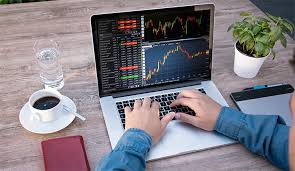
In recent years, forex trading has gained immense popularity, attracting millions of traders worldwide. However, with this growth has come a rise in fraud and deceit. forex trading scams Turkish Trading Platforms have also witnessed their share of scams, making it crucial for individuals to become educated about the risks involved. In this article, we’ll delve into the world of forex trading scams, examining common tactics employed by fraudsters, how you can protect yourself, and what to look for in a legitimate trading opportunity.
What is Forex Trading?
Forex trading, or foreign exchange trading, involves the buying and selling of currencies in the global marketplace. It is one of the largest financial markets in the world, with a daily trading volume exceeding $6 trillion. The trade takes place through a broker or financial institution, allowing traders to speculate on currency pairs and profit from fluctuations in exchange rates.
The Allure of Forex Trading
The appeal of forex trading lies in its potential for high returns. Unlike traditional investment methods, forex trading offers remarkable leverage, enabling traders to control large positions with a relatively small amount of capital. Furthermore, the forex market operates 24/5, providing ample opportunities for traders to capitalize on price movements.
Common Forex Trading Scams
As the forex market has grown, so too have the number of scams targeting unsuspecting traders. Here are some of the most common types of forex trading scams:
1. Ponzi Schemes
Ponzi schemes are investment scams that promise high returns with little risk. In these schemes, returns are paid to earlier investors using the capital from newer investors, rather than from profit earned by the operation of a legitimate business. Eventually, the scheme collapses when it becomes impossible to recruit enough new investors.
2. Phishing Scams
Fraudsters often use phishing tactics to steal personal and financial information. They may send unsolicited emails or messages, posing as legitimate brokers or financial institutions, and trick individuals into providing sensitive information or credentials.
3. Pump and Dump Schemes
This type of scam involves artificially inflating the price of a currency or asset through false and misleading statements. Once the price has been artificially increased, the fraudsters sell their holdings at a profit, leaving unsuspecting investors with significant losses as the price subsequently crashes.
4. Unrealistic Promises
Many scams present themselves as opportunities claiming to offer guaranteed returns or “win rates” that are too good to be true. Legitimate trading involves risks, and any claims of certain profits should raise red flags.
Red Flags to Watch For
Identifying a forex trading scam can sometimes be challenging, especially when the offer seems attractive. However, the following red flags can help you determine whether an opportunity is legitimate or a scam:

1. Lack of Regulation
Legitimate forex brokers are regulated by financial authorities. Always verify the broker’s credentials and check whether they are licensed to operate within your jurisdiction. Operating without proper regulation is a significant warning sign.
2. High-Pressure Tactics
Scammers often employ high-pressure sales tactics, urging potential investors to act quickly before they “miss out” on an opportunity. Take your time to evaluate any investment before committing funds.
3. Vague or Misleading Information
Scammers frequently provide vague descriptions of their trading strategies or do not provide clear information about the risks involved. A reputable broker should be transparent about their methods and the associated risks.
How to Protect Yourself
To protect yourself from forex trading scams, consider these protective measures:
1. Do Your Research
Before investing, conduct thorough research on the broker or platform you are considering. Check for reviews, regulatory compliance, and the overall reputation of the broker.
2. Start with a Demo Account
Many brokers offer demo accounts that allow you to practice trading without financial risk. This enables you to familiarize yourself with the platform and assess its legitimacy.
3. Use Trusted Resources
Seek advice from reputable financial experts and resources to stay informed about potential scams. Online forums and regulatory websites often provide insights into the legitimacy of various trading platforms.
4. Keep Personal Information Safe
Never share your personal or financial information with someone you do not trust, and always ensure that the platform you are using has robust security measures in place.
Conclusion
The realm of forex trading can be rewarding, but it is also fraught with risks, especially when scams are prevalent. By being aware of common scams, recognizing red flags, and implementing protective strategies, you can enhance your chances of trading successfully and safely. In the evolving landscape of forex trading, stay informed, remain vigilant, and always prioritize your financial security.



